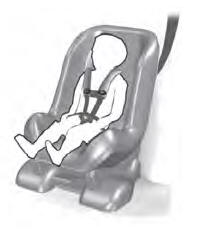Lincoln Aviator 2020-2025 Service Manual / Chassis / Suspension / Vehicle Dynamic Suspension / Removal and Installation - Rear Suspension Height Sensor
Lincoln Aviator: Vehicle Dynamic Suspension / Removal and Installation - Rear Suspension Height Sensor
Removal
NOTE: Removal steps in this procedure may contain installation details.
-
Remove the wheel and tire.
Refer to: Wheel and Tire (204-04A Wheels and Tires, Removal and Installation).
-
NOTE: LH sensor assembly shown, RH similar.
Remove the rear suspension height sensor.
-
Disconnect the rear height sensor electrical connector.
-
Unclip the rear height sensor wire harness from the
rear height sensor bracket and position the harness aside.
-
Remove the rear height sensor bracket bolt.
Torque: 133 lb.in (15 Nm)
-
Remove the rear height sensor arm bracket bolt and remove the rear height sensor.
Torque: 22 lb.ft (30 Nm)
-
Disconnect the rear height sensor electrical connector.
.jpg) |
Installation
All vehicles
-
NOTE: The RH (right-hand) and LH (left-hand) height sensor assemblies cannot be used on opposite sides of the vehicle.
To install, reverse the removal procedure.
Vehicles Equipped With Air Suspension
-
Complete the SUMA ride height calibration. Connect the scan tool and carry out the Ride Height Calibration routine.
All vehicles
-
Complete the VDM ride height calibration. Connect the scan tool and carry out the Ride Height Calibration routine.
 Removal and Installation - Rear Air Spring
Removal and Installation - Rear Air Spring
Removal
WARNING:
Vent all air pressure from the air suspension system prior
to disconnecting or removing any air suspension components. It is
dangerous to remove air suspension components while under pressure...
 Removal and Installation - Vehicle Dynamics Control Module (VDM)
Removal and Installation - Vehicle Dynamics Control Module (VDM)
Special Tool(s) /
General Equipment
Interior Trim Remover
Removal
NOTICE:
Electronic modules are sensitive to static electrical charges. If exposed to these charges, damage may result...
Other information:
Lincoln Aviator 2020-2025 Service Manual: Description and Operation - Direct Current/Alternating Current (DC/AC) Inverter - System Operation and Component Description
System Diagram System Operation Network Message Chart Broadcast Message Originating Module Message Purpose Power pack torque status Secondary On-Board Diagnostic Control Module C (SOBDMC) Used to determine if the vehicle is started or if torque is available...
Lincoln Aviator 2020-2025 Owners Manual: Evasive Steering Assist (If Equipped)
If your vehicle is rapidly approaching a stationary vehicle or a vehicle traveling in the same direction as your vehicle, the system is designed to help you steer around the vehicle. The system only activates when all of the following occur: The Pre-Collision Assist system detects a vehicle ahead and starts to apply Active Braking...
Categories
- Manuals Home
- Lincoln Aviator Owners Manual
- Lincoln Aviator Service Manual
- Refueling
- Remove and Reinstall the Battery
- Resetting the System
- New on site
- Most important about car
Child Seats

Use a child restraint (sometimes called an infant carrier, convertible seat, or toddler seat) for infants, toddlers and children weighing 40 lb (18 kg) or less (generally four-years-old or younger).
Using Lap and Shoulder Belts
WARNING: Do not place a rearward facing child restraint in front of an active airbag. Failure to follow this instruction could result in personal injury or death.
Copyright © 2025 www.liaviator2.com
